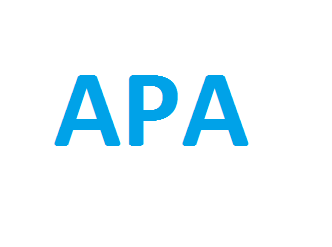
The Academic Perspective Procedia publishes Academic Platform symposiums papers as three volumes in a year. DOI number is given to all of our papers.
Publisher : Academic Perspective
Journal DOI : 10.33793/acperpro
Journal eISSN : 2667-5862
Dünyadaki Sel Felaketleri ve Alınabilecek Önlemler: Ülkelerin Sel Yönetim Mekanizmaları
Abstract
Bu çalışmada, sel felaketlerinde alınması gereken önlemler hakkında öneriler sunularak literatüre katkı sunmak amaçlanmaktadır. Sel felaketleri, iklim değişikliği, ormansızlaşma ve hızlı kentleşme gibi faktörlerin etkisiyle dünya genelinde önemli bir tehdit oluşturmaktadır. Seller, hem gelişmiş hem de gelişmekte olan ülkelerde büyük can kayıplarına neden olmakla birlikte, tarım arazilerini, yerleşim yerlerini ve altyapıyı tahrip ederek gıda güvenliğini tehdit ederek ekonomik kayıplara da yol açmaktadır. Bu riskleri azaltmak için ülkeler, sel yönetim mekanizmaları geliştirmektedir. Çalışmada, ülkelerin sel felaketlerine aldıkları önlemler incelenmiştir. Araştırma sonuçlarına göre, ülkelerde sel yönetimi kapsamında çeşitli yapısal ve yapısal olmayan önlemler alındığı tespit edilmiştir. Yapısal önlemler arasında barajlar, setler ve taşkın kanalları yer alırken, yapısal olmayan önlemler arasında erken uyarı sistemleri, taşkın riski haritaları ve afet bilinci oluşturma çalışmaları bulunduğu görülmektedir. Çalışmanın sonuçlarına göre, ülkelerin sel felaketleri ile mücadelede daha etkili ve sürdürülebilir çözümler geliştirmeleri, iklim değişikliği ile mücadele stratejilerinin bir parçası olarak büyük önem taşımaktadır. Bu çabalar hem insan hayatını korumak hem de ekonomik kayıpları azaltmak için hayati öneme sahiptir. Karar vericilere, sürdürülebilir kalkınma hedeflerine uygun sel yönetim yaklaşımı uygulaması önerilmektedir.
References
[1] Chan FKS, Chuah CJ, Ziegler AD, Dąbrowski,M & Varis O. Towards resilient flood risk management for Asian coastal cities: Lessons learned from Hong Kong and Singapore. Journal of Cleaner Production 2000:187, 576–589.
[2] Mutluay E. Sel Risk Yönetimi Kavramının Değişen Çerçevesi ve Mekansal Planlama ile İlişkisinin İncelenmesi: Edirne Örneği. 2019. İstanbul Teknik Üniversitesi.
[3] Bubeck P, Kreibich H, Penning-Rowsell EC & Botze WJW. Explaining differences in flood management approaches in Europe and the USA: A comparative analysis. Journal Flood Risk Management 2017:10(4), 436–445.
[4] Em-Dat. Since 2000, some of the major flood disasters around the world, Date accessed: 01.08.2024. Available Adress: https://public.emdat.be/
[5] Serra-Llobet A, Conrad E & Schaefer K. Governing for Integrated Water and Flood Risk Management: Comparing Top-Down and Bottom-Up Approaches in Spain and California. Water 2006:8(10), 445. https://doi.org/https://doi.org/10.3390/w8100445
[6] Hino M, BenDor TK, Branham J, Kaza N, Sebastian, A & Sweeney S. Growing Safely or Building Risk? Floodplain Management in North Carolina. Journal of the American Planning Association 2024: 30(1), 50–62. https://doi.org/https://doi.org/10.1080/01944363.2022.2141821
[7] Ndille R & Belle JA. Managing the Limbe Floods: Considerations for Disaster Risk Reduction in Cameroon. International Journal of Disaster Risk Science 2014:5, 147–156.
[8] Bang HN. Policy and Institutional Frameworks for Disaster Risk Management in Cameroon: Challenges and Prospects. Disaster Management in Sub-Saharan Africa : Policies, Institutions and Processes 2022:97–122. https://doi.org/10.1108/978-1-80262-817-320221004
[9] Bosher L, Dainty A, Carrillo P, Glass J & Price A. Integrating disaster risk management into construction: a UK perspective. Building Research & Information 2007:35(2), 163–177. https://doi.org/https://doi.org/10.1080/09613210600979848
[10] Maskrey SA, Priest S & Mount NJ. Towards evaluation criteria in participatory flood risk management. Journal of Flood Risk Management 2019:12(2). https://doi.org/https://doi.org/10.1111/jfr3.12462
[11] Uzunçıbuk L. Yerleşim Yerlerinde Afet ve Risk Yönetimi. 2005. Ankara Üniversitesi.
[12] Butler C, Pidgeon N. From “Flood Defence” to “Flood Risk Management”: Exploring Governance, Responsibility, and Blame. Environment and Planning C: Politics and Space 2011:29(3), 533–547.
[13] Wu X, Shen X, Li J, Xie X. Determination and projection of flood risk based on multi-criteria decision analysis (MCDA) combining with CA-Markov model in Zhejiang Province, China. Urban Climate 2024:53, 101769. https://doi.org/https://doi.org/10.1016/j.uclim.2023.101769
[14] Yaman F. Dünya’da ve Ülkemiz’de Afet & Acil Durum Yönetimi ve Güncel Yaklaşımlar. 2021.
[15] Mol JM, Botzen WJW, Blasch JE, Kranzler EC, Kunreuther HC. All by myself? Testing descriptive social norm-nudges to increase flood preparedness among homeowners. Behavioural Public Policy 2024:8(1), 121–153. https://doi.org/https://doi.org/10.1017/bpp.2021.17
[16] Hasan MR, Nasreen M, Chowdhury MA. Gender-inclusive disaster management policy in Bangladesh: A content analysis of national and international regulatory frameworks. International Journal of Disaster Risk Reduction 2019:41, 101324. https://doi.org/https://doi.org/10.1016/j.ijdrr.2019.101324
[17] Rehman J, Sohaib O, Asif M, Pradhan B. Applying systems thinking to flood disaster management for a sustainable development. International Journal of Disaster Risk Reduction 2019:36, 101101. https://doi.org/https://doi.org/10.1016/j.ijdrr.2019.101101
[18] Thistlethwaite J, Henstra D, Brown C, Scott D. How Flood Experience and Risk Perception Influences Protective Actions and Behaviours among Canadian Homeowners. Environmental Management 2018:61, 197–208. https://doi.org/10.1007/s00267-017-0969-2
[19] Hubballi R, Maji S. Mitigation of flash floods in Kokrajhar of the state of Assam in northeast India. Sustainability, Agri, Food and Environmental Research 2024:12(2), 1–11. https://doi.org/http://dx.doi.org/10.7770/safer-V13N1-art599
[20] Uzuntaş Ö, Öztürk S. Türkiye’deki Sel ve Taşkın Yönetmelikleri Üzerine Bir Değerlendirme: Farklı Ülkeler ile Karşılaştırma ve Yasal Boşluk Analizi. The Journal of International Scientific Researches 2019:4(2), 146–161.
[21] Metz F, Angst M, Fischer M. Policy integration: Do laws or actors integrate issues relevant to flood risk management in Switzerland? Global Environmental Change 2020:61, 101945. https://doi.org/https://doi.org/10.1016/j.gloenvcha.2019.101945
[22] Ranieri CM, Foletto AVK, Garcia RD, Matos SN, Medina MMG, Marcolino LS & Ueyama J. Water level identification with laser sensors, inertial units, and machine learning. Engineering Applications of Artificial Intelligence 2024:127, 107235. https://doi.org/https://doi.org/10.1016/j.engappai.2023.107235
[23] Wahba M, Sharaan M, Elsadek WM, Kanae S & Hassan H. S. Building information modeling integrated with environmental flood hazard to assess the building vulnerability to flash floods. Stochastic Environmental Research and Risk Assessment 2024:38(2), 1–21. https://doi.org/https://doi.org/10.1007/s00477-023-02640-9
[24] Peng L, Wang Y, Yang L, Garchagen M & Deng X. A comparative analysis on flood risk assessment and management performances between Beijing and Munich. Environmental Impact Assessment Review 2024:104, 107319.
Cite
-
 %0 Academic Perspective Procedia (ACPERPRO) Dünyadaki Sel Felaketleri ve Alınabilecek Önlemler: Ülkelerin Sel Yönetim Mekanizmaları% A Emrah Gökkaya , Rümeysa Ayşe Güden% T Dünyadaki Sel Felaketleri ve Alınabilecek Önlemler: Ülkelerin Sel Yönetim Mekanizmaları% D 1/6/2025% J Academic Perspective Procedia (ACPERPRO)% P 1-10% V 6% N 1% R doi: -% U -
%0 Academic Perspective Procedia (ACPERPRO) Dünyadaki Sel Felaketleri ve Alınabilecek Önlemler: Ülkelerin Sel Yönetim Mekanizmaları% A Emrah Gökkaya , Rümeysa Ayşe Güden% T Dünyadaki Sel Felaketleri ve Alınabilecek Önlemler: Ülkelerin Sel Yönetim Mekanizmaları% D 1/6/2025% J Academic Perspective Procedia (ACPERPRO)% P 1-10% V 6% N 1% R doi: -% U -




